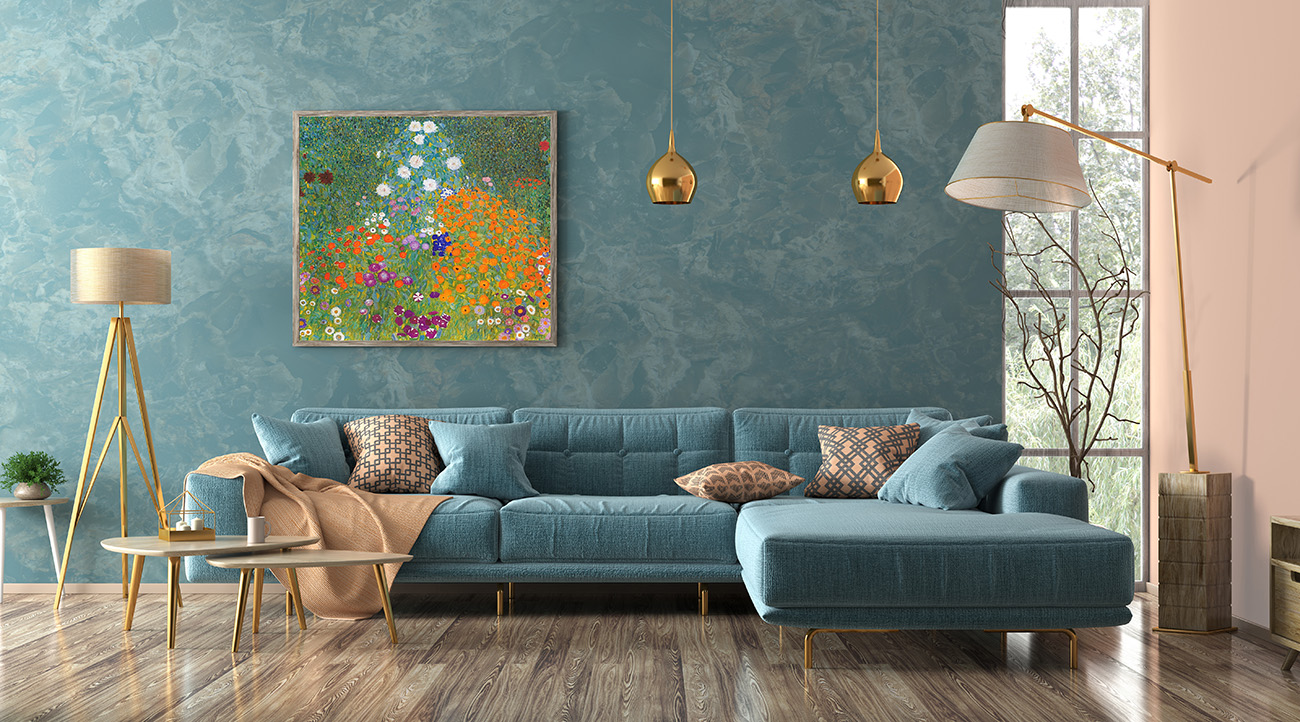1. The Material – First Impressions Matter
You can feel the difference at the very first touch: a high-quality canvas feels pleasant, almost velvety and natural. In contrast, cheap material feels cold and plastic-like, as if you were holding a billboard tarp. The smell also gives clues: high-quality canvases smell neutral to subtly pleasant, while cheap alternatives often emit an unpleasant odor of plastic or varnish.
2. Color Depth and Brilliance – Art That Remains Vibrant
Genuine fine art is immediately recognizable by its luminous, rich colors. The color transitions are harmonious, and subtle nuances are clearly visible. And it stays that way: high-quality art prints retain their brilliance even after many years—they do not fade, even when exposed to sunlight. Inferior prints, on the other hand, quickly appear dull, pale, or unnaturally harsh.
3. Lightfastness – Durability for Generations
Not every print lives up to its promise. Good art prints are made with lightfast pigments, so the colors remain intact without yellowing or fading. Those who value quality are investing in longevity. For example, our prints are produced with inks that guarantee lightfastness for up to 200 years!
4. The Print – The Eye Sees the Truth
High-quality art prints display a razor-sharp, detailed surface. Individual color dots are often only visible under a magnifying glass, and color layers blend into a harmonious whole. Coarse print dots, visible lines, or a pungent varnish smell, on the other hand, indicate cheap mass production.
5. Craftsmanship – Attention to Detail
The frame also deserves a closer look: a high-quality stretcher frame is finger-jointed, rounded, and feels smooth and pleasant to the touch. Cheap versions are often made from fibrous or sharp-edged wood. For decorative frames, check the craftsmanship of the corners, the surface of the frame, and even the back. A bit of “patina” usually indicates genuine handwork.
6. Artistic Details – The Soul of the Original
Genuine fine art prints captivate with small special features: the sheen of individual colors, the fine texture of watercolor paper, the tangible relief of linen or handmade Japanese paper. Those who look closely and gently run their fingers over the material can feel the fibers, irregularities, sometimes even tiny cracks from the original—or even a hair that once fell from the artist’s brush. Such details turn an art print into a true experience.
7. Transparency and the Provider’s Presence
A reputable provider does not hide: they openly share information about materials, printing processes, and the origin of the works. Especially with canvases, there are significant differences—don’t hesitate to request a sample or a test print before placing a larger order. Reputable providers specialize in art prints, know their craft, and do not sell mass-produced goods alongside mugs and cushion covers. Pay attention to the shop’s reviews and whether production actually takes place locally or if your order is shipped from the Far East.









